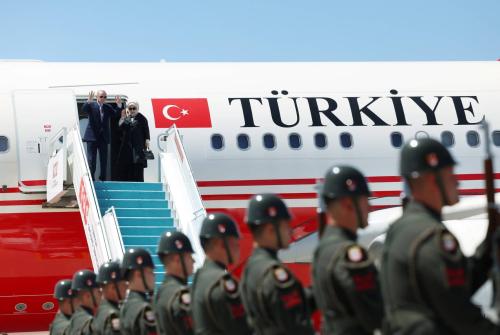When the Board of Governors of the International Atomic Energy Agency meets in Vienna today, there will probably be a fight over Iran’s suspected nuclear weapons program. The United States wants Iran hauled before the United Nations Security Council for violating the Nuclear Nonproliferation Treaty. The European members, however, want to negotiate with Iran.
But even if the United States and Europe were able to agree on procedure, it’s unlikely that the board would be able to answer the more important question before it: what should Iran be allowed to do?
The difficulty in answering this question reflects an underlying problem with the organization. Its two-part structure—it both supports nuclear energy and controls nuclear weapons—increasingly gets in the way of multilateral efforts to stop weapons programs. This weakness cannot be addressed through incremental reforms. The solution may require splitting the agency in two.
At the time of the agency’s creation, in 1957, a two-part mission made sense. It grew out of the belief that the world had a very limited supply of uranium that could be used to meet either civilian or military needs, but not both. By promoting civilian nuclear energy, the agency would direct precious resources away from military nuclear programs, thereby limiting the advance of atomic weapons. Today, though, we know that there is plenty of uranium to go around; increased consumption of uranium in nuclear energy programs, therefore, does nothing to blunt the advance of nuclear weapons.
For most of its history, the International Atomic Energy Agency’s dual missions worked fine. But as recent experience in Iran and North Korea shows, the structure is now a recipe for ineffectiveness and, possibly, disaster. Because of the agency’s dual purpose, roughly half the members of its 35-member board are more interested in preserving their own states’ access to nuclear technology than in enforcing a strict nonproliferation regime. This has led to an uncomfortable balance, where states are allowed to develop nuclear technology as long is it is monitored by the agency.
It has also led to a dangerous loophole, one that North Korea has exploited and Iran might take advantage of, too: Under the guise of a civilian energy program, a state can openly develop most of a nuclear weapons program under agency supervision. It can then eject the agency and go on to build nuclear weapons.
Take the case of Iran. In a report this month, Mohammed ElBaradei, the agency’s director, pointed out that investigators found no evidence of an Iranian nuclear weapons program. But it’s difficult to imagine circumstances under which the agency might have come up with something different. After all, it has no explicit mandate to discern a country’s capacity and intent to assemble nuclear materials into a nuclear bomb—nor does it have the mandate to infer ill intent based on a nation’s behavior over time. The agency simply monitors nuclear materials and, if given special permission, hunts for their illicit production. In the absence of bulletproof evidence, it judges states innocent of pursuing nuclear weapons. All this makes sense for an agency with twin aims. But in an age with the potential for nuclear terrorism, don’t we need an entity whose sole aim is to stop the spread of nuclear weapons?
The only solution may be to break the International Atomic Energy Agency in half: one dedicated to nonproliferation, the other to the advance of energy technology.
The first new agency would focus its resources on mischievous countries and issue clear and regular verdicts on compliance. It would have a mandate to search not only for weapons materials, but also for the nonnuclear components of weapons themselves. Ultimately, it would issue guidelines on the regulation and availability of specific nuclear technologies. And ideally, its board of governors would be re-balanced in order to provide a strong stake for those states put at greatest risk by the spread of nuclear weapons and terrorism.
The second new agency would help countries, particularly those in the developing world, figure out which energy technologies best suit their needs. By helping nations develop gas, coal or even atomic energy, the agency could effectively induce states into a new nonproliferation bargain.
Persuading the United Nations to follow this course won’t be easy: any change would require a vote by member states and the agency’s board of governors. Still, as the United Nations struggles to make itself a force for stability in an unstable world, this could be the place to start.
The Brookings Institution is committed to quality, independence, and impact.
We are supported by a diverse array of funders. In line with our values and policies, each Brookings publication represents the sole views of its author(s).



Commentary
Op-edA Nuclear Mixed Message
November 20, 2003